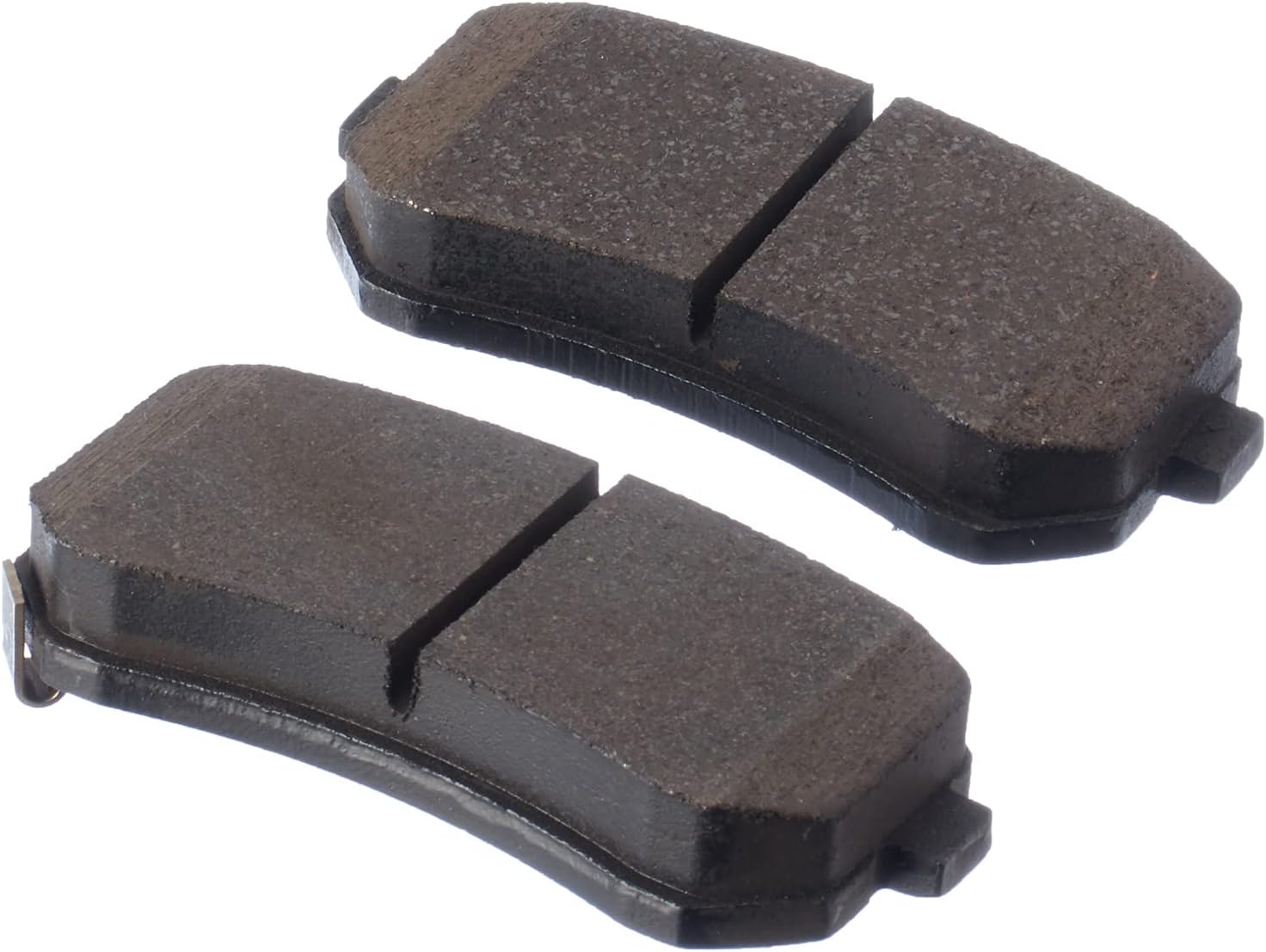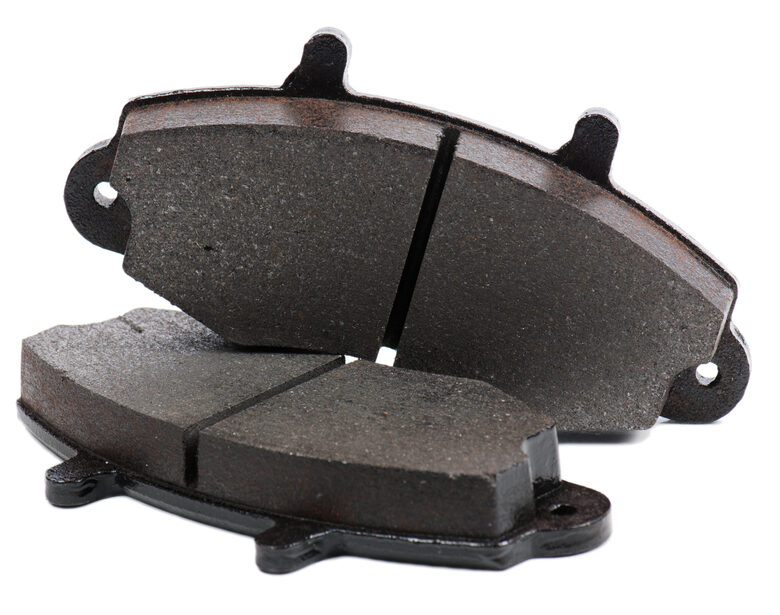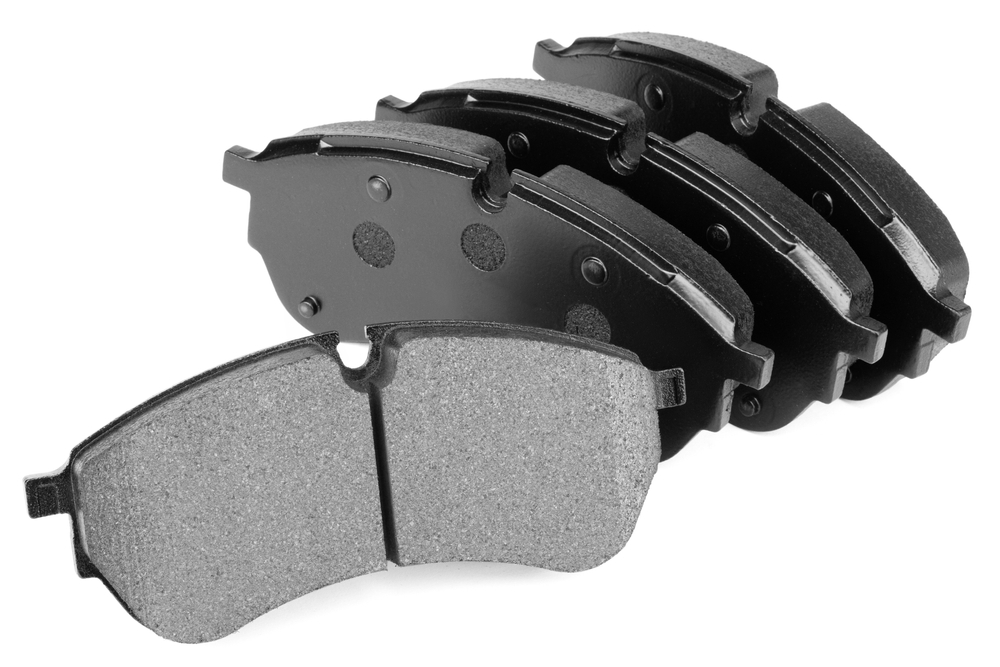Master Your Brakes &
Stay in Control
Find Your Perfect Fit: Discover the Right Brake Pads for Your Vehicle
From Everyday Commutes to Performance Thrills!
Your 3 Main Options for Brake Pads
While the composition of automotive brake pads may vary among brands, the fundamental characteristics of each type remain consistent. The type of friction material used in the brake pads plays a crucial role in determining factors such as pedal feel, dust generation, noise levels, lifespan, performance, and temperature range. Automotive brake pads are categorized based on the materials they are made from. These materials can be divided into three main categories:
Non-Asbestos Organic

Let's begin with the most commonly used type of brake pads for modern cars: non-asbestos organic, often referred to as ``organic brake pads.`` These brake pads are called organic because they no longer contain asbestos, a heat-dissipating material that was found to be carcinogenic. Asbestos use in brake pads was subsequently banned.
Compared to other compounds, organic pads are softer and may not last as long. However, they have the advantage of being affordable and gentle on the rotors. If you find yourself wearing out a set of organic pads quickly, replacing them won't put a strain on your budget.
While organic brake pads offer affordability and rotor friendliness, there are a few factors to consider. Due to their soft composition, you may notice extra residue on your wheels, although it's not a significant issue.
If you're accustomed to high-performance vehicles, you might find the pedal feel slightly spongy with organic pads. Their compressible nature may require more force on the brake pedal compared to cars equipped with semi-metallic pads.
It's worth noting that many car manufacturers choose non-asbestos organic (NAO) pads as their factory option. Replacing your old pads with NAO pads won't bring a noticeable difference in performance. One advantage of organic pads is their silence, especially when compared to metallic pads.
They are well-suited for relaxed daily driving and provide sufficient stopping power in most everyday situations. However, organic pads are not ideal for extreme temperatures. They are less effective in harsh winters and demanding driving conditions, such as track days.
Semi-Metallic or Metallic

Metallic brake pads, although pricier than NAO pads, are a popular choice in the aftermarket due to their durability and versatility across various conditions. Composed of materials such as iron, steel, copper, and graphite, the exact composition may vary among different brands.
One notable advantage of metallic brake pads is their firm pedal feel. Unlike organic pads, metallic pads do not compress easily under pressure, resulting in a more direct and responsive braking experience. This characteristic provides drivers with enhanced feedback from the brake system, contributing to a positive and confident braking performance.
With their robust construction, metallic brake pads exhibit a longer lifespan compared to organic counterparts. These pads are well-suited for demanding driving conditions and are known for their reliability and consistent performance. Whether it's regular city driving or occasional spirited driving, metallic brake pads deliver reliable stopping power and can handle a variety of scenarios.
One drawback of metallic brake pads is their tendency to generate a significant amount of brake dust. This can result in dirtier wheels and require more frequent cleaning. Additionally, due to their heavier composition, metallic pads can exert more stress on the rotors, potentially reducing their overall lifespan.
However, the advantages of metallic brake pads outweigh these drawbacks in many ways. They excel in various aspects, including superior longevity and consistent performance. Regardless of temperature conditions, metallic pads provide robust stopping power, making them particularly advantageous in colder climates.
It's important to note that metallic brake pads are generally noisier compared to other options. While the increased noise may be a minor inconvenience, the benefits of excellent braking performance make it a worthwhile trade-off.
Ceramic

Ceramic brake pads, composed of a blend of high-durability ceramic and metallic fibers, are renowned for their exceptional performance and fade-free braking, making them a sought-after choice despite their higher cost.
Some key advantages of ceramic brake pads include producing less brake dust, exerting minimal stress on the rotors, generating minimal noise, being lightweight, and providing consistently optimal pedal feel without experiencing brake fade.
Ceramic brake pads are particularly well-suited for track and competitive use, where high-performance braking is crucial. However, they are less ideal for everyday driving as they require a longer time to heat up to their optimal operating temperature.
Although ceramic brake pads may have a higher initial price, their longer lifespan and reduced rotor wear compared to metallic pads make them a cost-effective choice in the long run.
While ceramic brake pads offer a satisfactory brake feel, they may lack optimal brake bite at colder temperatures, which can be a drawback for driving enthusiasts using them in their spirited daily vehicles.
However, one notable advantage of ceramic pads is their quiet operation during braking. This is particularly appreciated by owners of high-performance cars, as they won't have to endure the intrusive noise commonly associated with metallic pads. Additionally, the reduced brake dust means less frequent wheel cleaning.
Ceramic brake pads truly shine in their ability to provide fade-free braking. This makes them an excellent choice for those seeking replacement brake pads for their track-focused vehicles, ensuring consistent and reliable performance even during intense driving sessions.
Which Brake Pad Compound Suits You Best?
